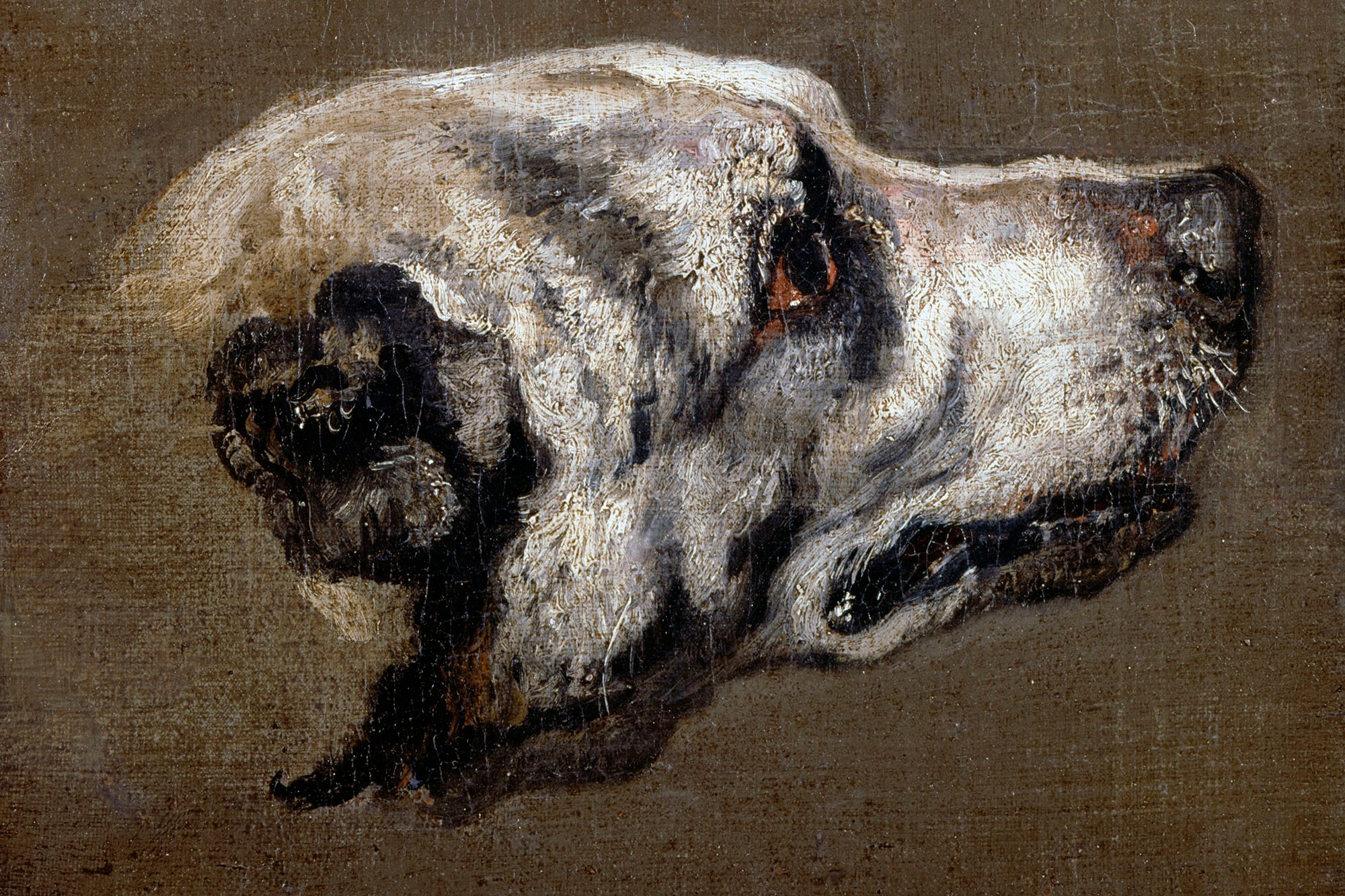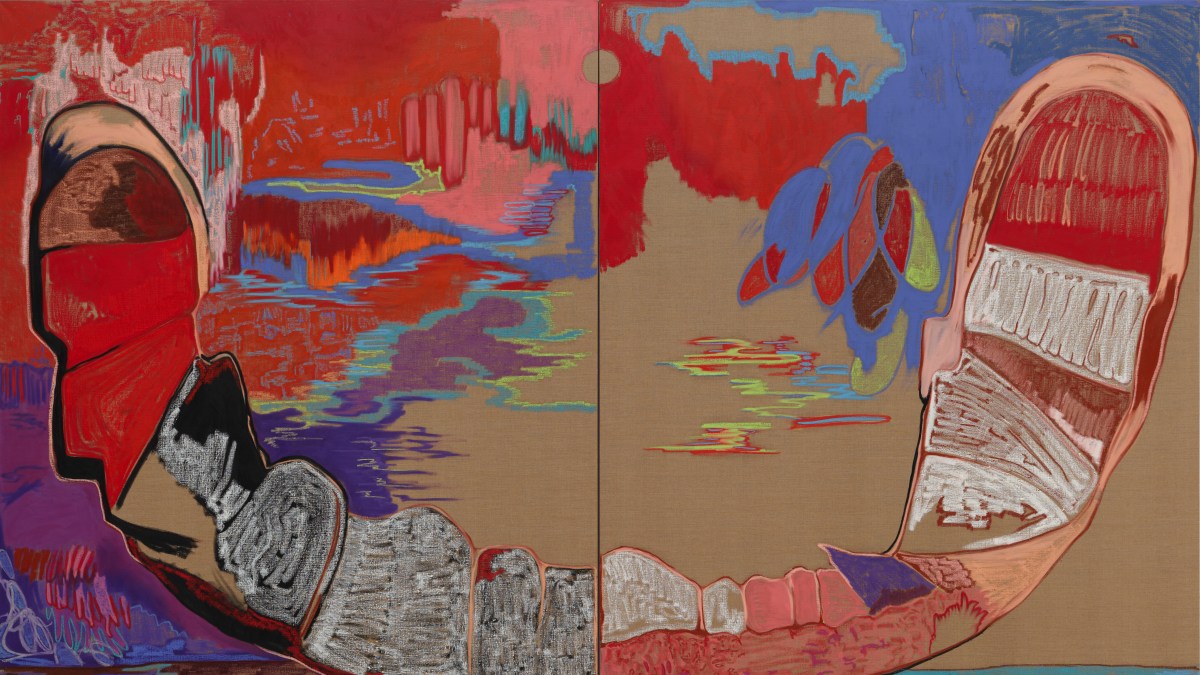The soft, slack, moist corner of a hound’s drooping mouth is the slightly unexpected starting point for this dynamic exhibition at Dulwich Picture Gallery in London of work by the young British contemporary artist Rachel Jones. Invited to respond to the permanent collection, Jones chose the 17th-century Flemish painter Pieter Boel’s close-up study of a hunting dog, the head lifted as if in anticipation of … what? A treat? A directive? A reprimand?

Head of a Hound (c 1660-5), by Pieter Boel
Next to Jones’s riotously colourful new body of work — 14 mostly huge paintings titled Gated Canyons (shown alongside a selection of earlier, smaller works chosen by the artist to place them in the context of her developing practice) — the throughline from this naturalistic little painting, near monochromatic in blacks, browns, whites and greys, is not immediately obvious. But the tension and ambiguity in Boel’s intimate picture is reflected in Jones’s vast canvases, while the motif of the mouth has haunted her work for years. She finds it fascinating, literally and symbolically, regarding it as an entry point to the interior self, an aperture through which what is inside can come out, for better or worse. It’s a stand-in for the body, and it serves as a way to explore emotion and how it doesn’t always translate on the outside.
• Read more art reviews, guides and interviews
It probably helps to have a bit of this context but it’s not essential. These paintings occupy a hinterland between abstraction and figuration, and Jones, who at 34 has already developed a unique visual language, has attempted to create an environment that allows the viewer an instinctive, rather than intellectual, response to their vivid reds, spearmint greens, rich purples and emphatic yellows. The exhibition spaces use natural light where possible to avoid leading visitors to any sort of response by spotlighting the works.

The paintings occupy a hinterland between abstraction and figuration
EVA HERZOG
The installation, with plentiful seating, encourages you to spend time with them — you’re not meant to whizz through but to sit and allow her shifting, vibrating abstractions to envelop you. You should pay attention to how they make you feel, rather than trying to work out what they represent or mean.
• The best exhibitions in London and the UK to book
Yes, you can pick out mouths and teeth, as well as the odd brick wall (a new thing). Is that a grin or a grimace? Could it, Joker-like, be both? And is that a landscape? A rippling expanse of water? And of course there are layers of meaning — the unspeaking mouth is remarkably eloquent, evoking the oversexualisation of women or racial caricature. But these are expressive works that are meant to be felt — and, given time, they leave you tingling.
★★★★☆
Dulwich Picture Gallery, London, to Oct 19, dulwichpicturegallery.org.uk
Follow @timesculture to read the latest reviews
